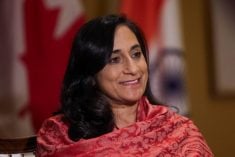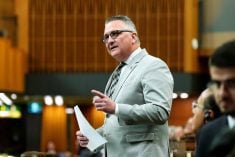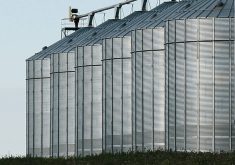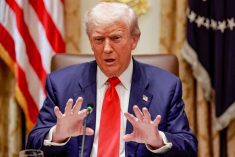OTTAWA (Reuters) – Canadian Finance Minister Bill Morneau is expected to
unveil a restrained budget on Tuesday, with just enough spending to
assuage middle class voters under pressure from rising rates — while
keeping his powder dry amid uncertainty over NAFTA.
With the domestic economy going strong and the Bank of Canada hiking
rates, the Liberal government is in a balancing act of slowly reining in
deficits while taking steps to bolster long-term growth as U.S. tax cuts
and protectionism threaten Canadian exports and competitiveness.
Read Also

Canada and China discuss disputes over canola and EVs, says Ottawa
Senior Canadian and Chinese officials discussed bilateral trade disputes involving canola and electric vehicles on Friday, Ottawa said, but gave no indication of any immediate breakthrough.
Household debt is also at a record high even as job gains bring the
country closer to full employment, a bad news-good news dichotomy that
will leave the government wanting to rebuild its rainy day cushion
without abruptly withdrawing stimulus.
“Canada at this juncture is an incredible risk management exercise,”
said Frances Donald, senior economist at Manulife Asset Management.
“From my perspective, a stay-the-course budget that keeps gunpowder
aside for future downside shocks could be just as well received — or
better — than a budget focused on spending.”
In its October update, the government estimated the deficit at C$19.9
billion ($15.71 billion) for the fiscal 2017-18 year ending March 31,
down from the C$28.5 billion anticipated in last year’s budget.
For the upcoming 2018-19 fiscal year, the deficit is seen at C$18.6
billion, including C$3 billion for risk adjustment.
While the next federal election is not until October 2019, giving the
Liberals another chance to deliver a vote-grabbing budget, the economy
faces some risks, including a possible end to the North American Free
Trade Agreement (NAFTA) or a sharp downturn in the housing market.
Morneau’s third budget is expected to include relatively low-cost
goodies for women and indigenous communities, consistent with an agenda
of boosting gender parity and inclusion. Such measures could also be
funded through reallocated infrastructure money.
Economists said there is less need for the government to continue to
spend — and a risk that more spending would force the central bank to
“This is really the point where you should be thinking about fiscal
tightening,” said senior economist Brian DePratto at TD Economics. “You
wouldn’t try to rush more money out the door necessarily at this point.”
While Canada could consider changing the tax rate on capital investment
in light of the recent reduction in U.S. corporate taxes, Morneau is
unlikely to unveil massive changes at this point, said Nathan Janzen,
senior economist at Royal Bank of Canada. ($1 = 1.2665 Canadian dollars)














